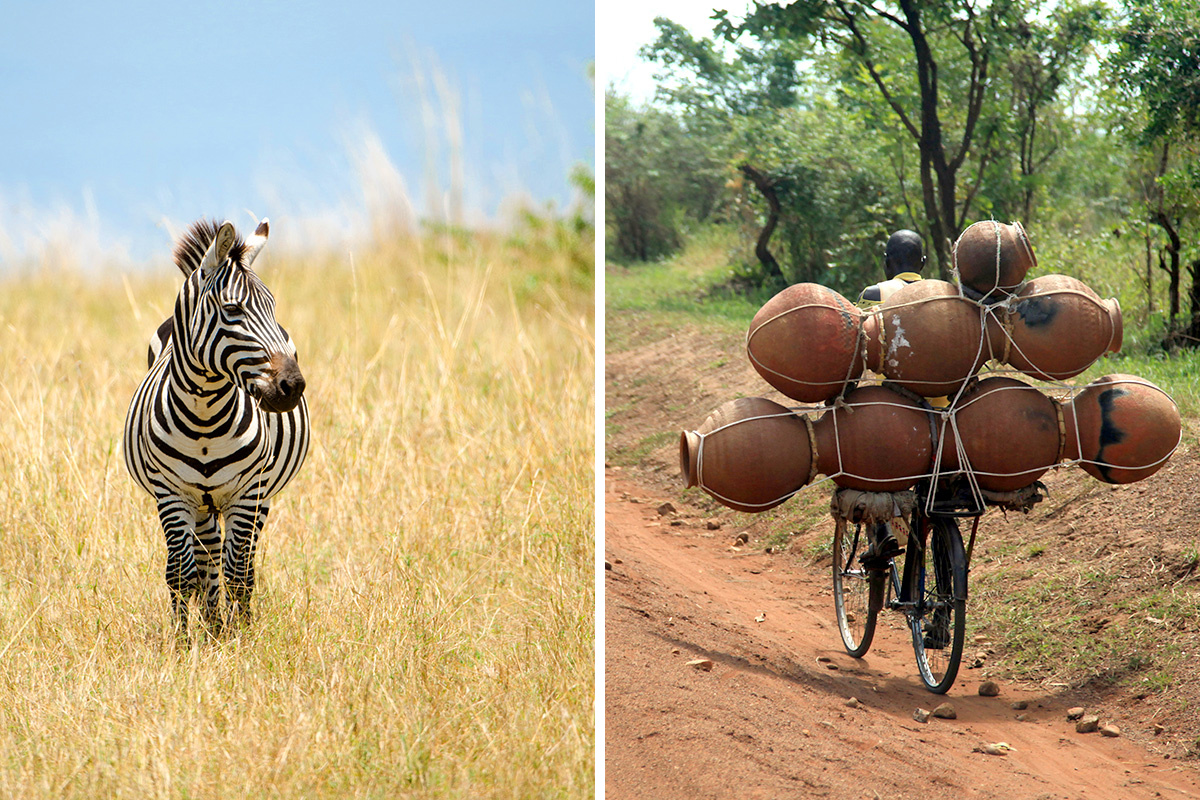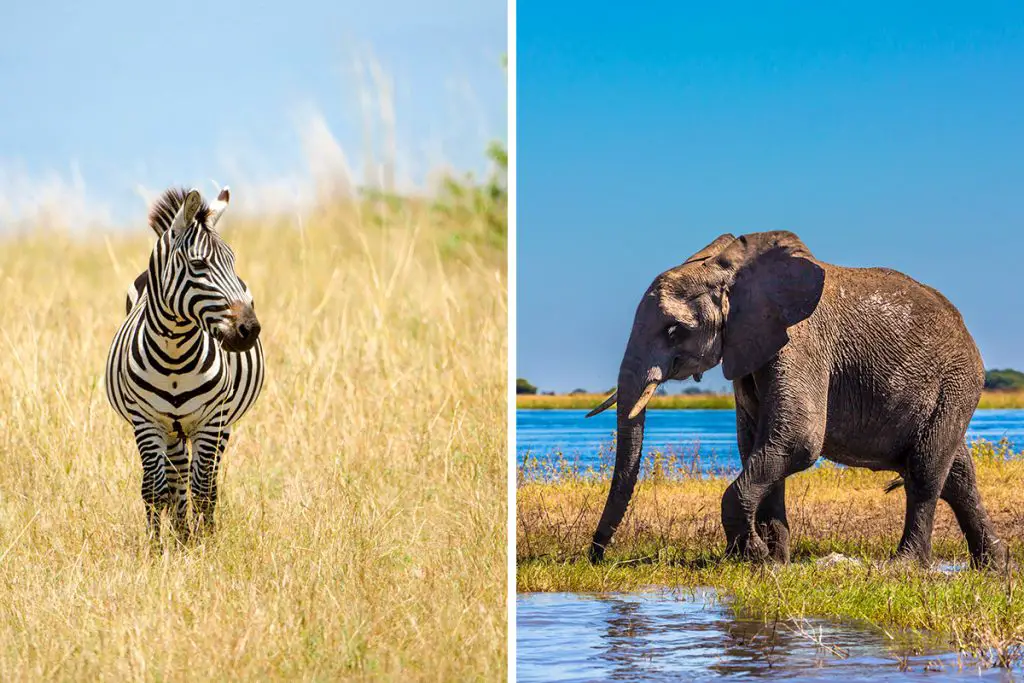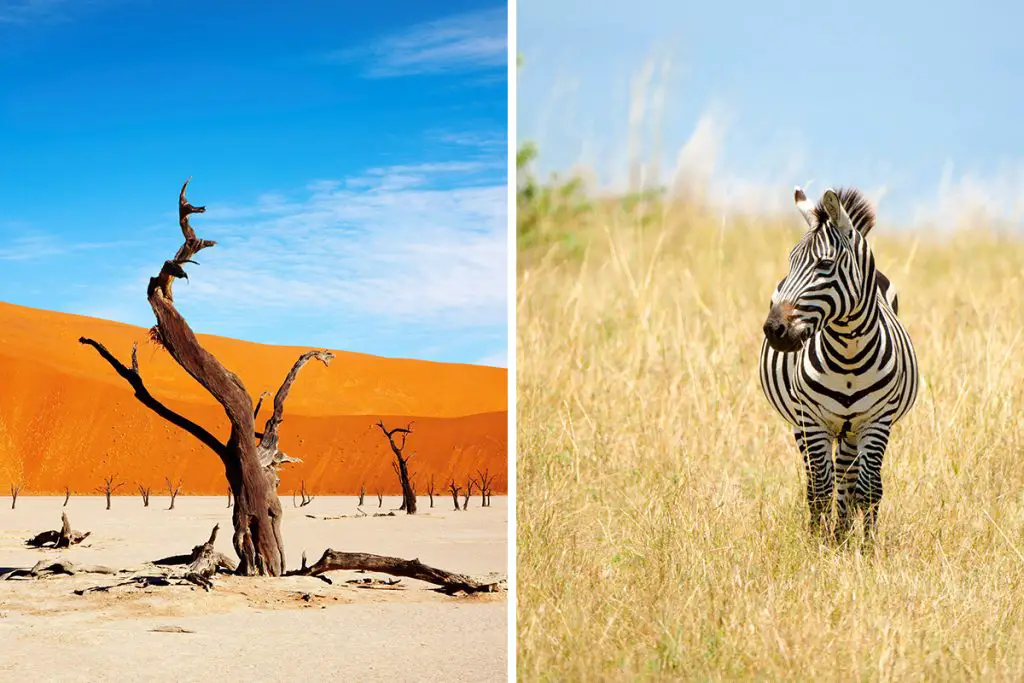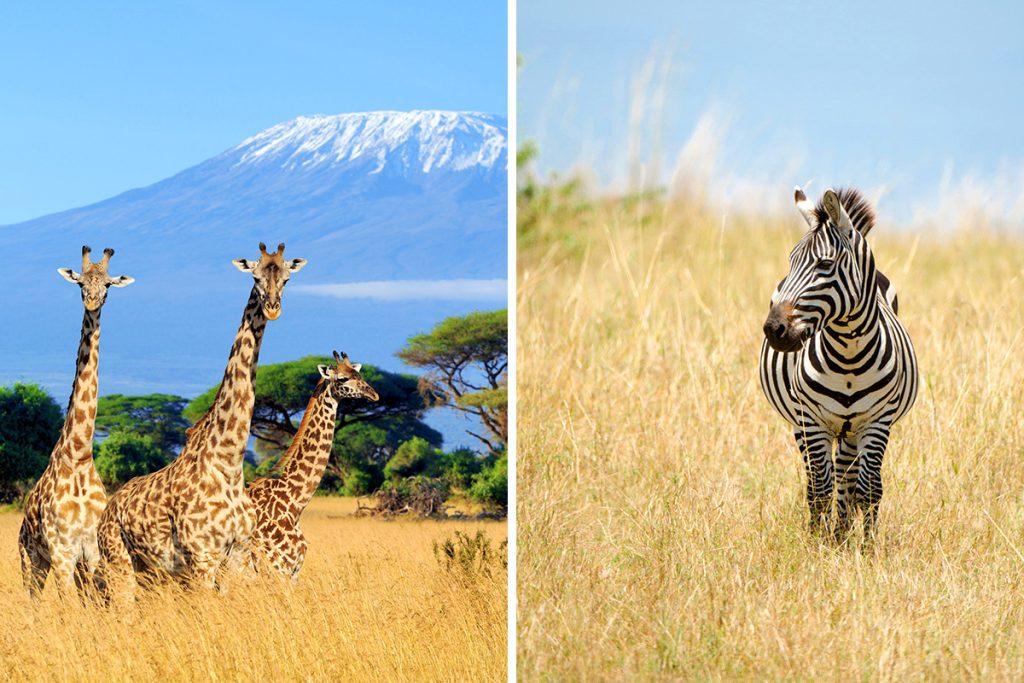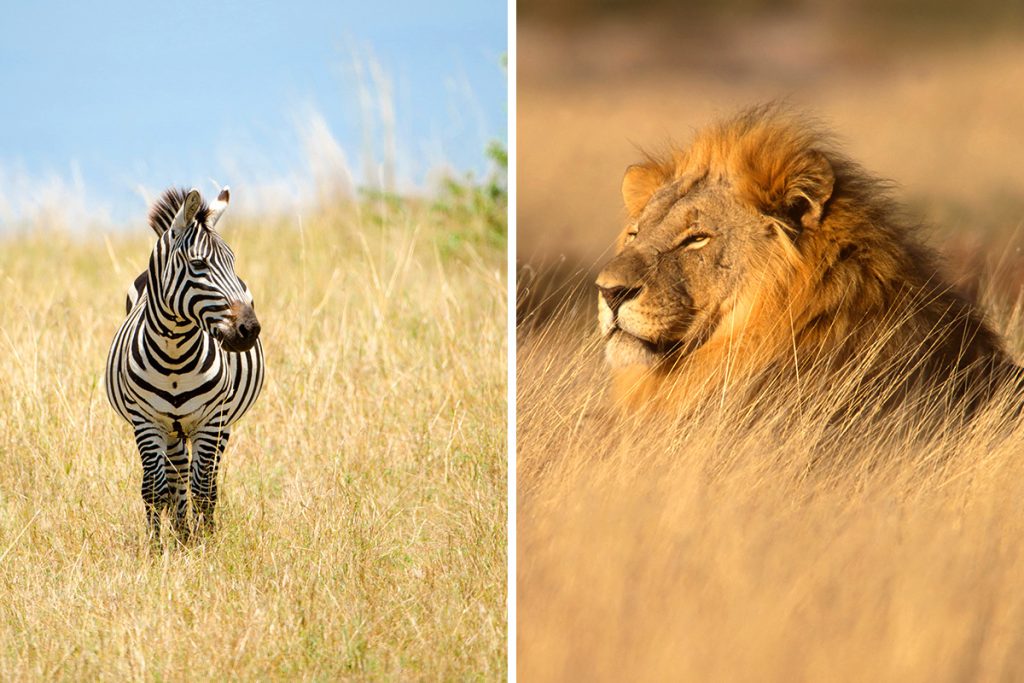When the dilemma of travel arises, Kenya and Uganda often sit atop the list, each promising unique experiences that can enrich your life. Think about the historical legacy and cultural traditions you could explore. How do you make this tough choice? Read on to find the answer tailored for you.
History & Culture
Both Kenya and Uganda are brimming with deep-rooted history and diverse cultures, which can make your travel not just entertaining but also enlightening. Let’s dive into how they compare on these fronts.
Kenya is known for its rich tapestry of tribes, including the Maasai and Kikuyu. These tribes have ancient traditions, dances, and stories passed down through generations. Don’t forget the Swahili culture, which is an amalgamation of African, Arab, and Persian influences. Swahili’s impact is especially strong along Kenya’s coastal regions.
Contrastingly, Uganda offers a somewhat different cultural landscape. Known as the Pearl of Africa, Uganda is home to various ethnic groups like the Baganda and Basoga. The country’s history is deeply entwined with kingdoms, such as Buganda, that have a legacy of unique customs and traditional ceremonies.
Uganda also has over 40 languages, with Luganda and English being the most commonly spoken.
While Kenya’s history was significantly shaped by the colonial rule of the British, which led to the infamous Mau Mau Uprising, Uganda had its share of complexities too. Idi Amin’s reign and the country’s struggles with dictatorship have left indelible marks on its history and culture.
Both countries have emerged resilient, boasting modern capitals; Nairobi for Kenya and Kampala for Uganda.
In Kenya, historical sites like the ancient city of Mombasa offer glimpses into a complex past, but the focus is often more on the present, with a growing emphasis on tech industries and modernization. Uganda, however, gives you a more untouched feel, with communities often living in harmony with traditional practices.
In summary, if you’re seeking a blend of traditional and modern cultures with a dash of colonial history, Kenya is your go-to. But if you’re more interested in an untouched culture that offers a rich diversity of languages and traditions, then Uganda promises to be a captivating destination. Your choice will depend on what kind of historical and cultural experience you wish to immerse yourself in.
Attractions & Activities
Choosing between Kenya and Uganda for attractions and activities feels like being a kid in a candy store: so much to choose from, yet so little time. Let’s dive deep into the particular offerings each of these incredible countries brings to the table.
Kenya is perhaps best known for its epic safaris. The Maasai Mara National Reserve offers you the chance to see the Big Five (lion, elephant, buffalo, leopard, and rhinoceros) up close. Plus, if you visit between July and October, you might catch the Great Migration, a thrilling spectacle of wildebeests and zebras crossing the Mara River.
For mountain enthusiasts, Mount Kenya presents a challenging but rewarding climb, standing at a height of 5,199 meters (17,057 feet).
On the flip side, Uganda provides you with a slightly different palette of outdoor adventures. The Bwindi Impenetrable National Park is a haven for gorilla trekking. Here you can come face to face with mountain gorillas in their natural habitat, a truly once-in-a-lifetime experience.
If you love hiking but want something less arduous than Mount Kenya, the Rwenzori Mountains offer a stunning range, with the highest peak, Mount Stanley, at 5,109 meters (16,762 feet).
Another unique attraction in Uganda is white-water rafting at the source of the Nile River in Jinja. While Kenya’s safaris may be more famous, Uganda’s national parks like Queen Elizabeth and Murchison Falls offer safaris that are less crowded, giving you a more intimate experience with the wildlife.
Both countries also have several lakes, like Lake Victoria, where you can go fishing or bird-watching, minus the crowds.
Kenya’s appeal largely hinges on its globally recognized safaris and majestic mountain ranges. Uganda, however, offers you the allure of less commercialized parks and unique adventures like gorilla trekking and rafting on the Nile. Depending on what kind of thrill you’re looking for, both countries have something spectacular to offer.
Beaches
When it comes to serene beaches, Kenya and Uganda each serve up their own slice of paradise. So, how do these countries compare in terms of sandy shores and coastal delights? Let’s find out.
Kenya’s coastline along the Indian Ocean stretches for about 536 kilometers (about 333 miles). Diani Beach, for example, is famous for its coral reefs and underwater sandbars. Watamu is another haven for snorkelers, with crystal clear waters teeming with marine life.
Uganda, a landlocked country, doesn’t have ocean beaches, but it makes up for this with lakeside beaches. Entebbe, located along the shores of Lake Victoria (the second-largest freshwater lake in the world), is popular among locals and tourists alike. Here, you’ll find about 64 kilometers (around 40 miles) of beachfront.
Kenya’s ocean beaches offer the promise of salty air, high tides, and a vast ecosystem below the water’s surface. In contrast, Uganda’s lake beaches give you a freshwater experience with calm waves and sometimes even the chance to spot unique bird species.
Summing up, if you’re a saltwater enthusiast who loves the sound of ocean waves and the complex world of marine life, Kenya should be your choice. However, if you prefer the stillness of freshwater bodies and a beach experience without the salt, Uganda’s lake beaches offer a charming alternative.
Eating, Drinking & Nightlife
Deciding where to let your taste buds run wild or where to dance the night away? Kenya and Uganda both offer a tempting menu of options. Let’s break it down by food, drink, and nocturnal adventures.
Kenya is a culinary paradise that offers a mix of local and international flavors. From nyama choma (grilled meat) to ugali (maize porridge), the country has a dish for every palate. Nairobi, the capital city, has a wide range of upscale restaurants serving dishes from Italian to Indian.
In Uganda, the food scene leans more towards traditional African dishes. Matooke (steamed bananas) is a staple here, often served with groundnut sauce or meat. The Ugandan Rolex, a street food made of a chapati rolled with eggs and vegetables, is also a must-try.
When it comes to drinking, Kenya is renowned for its local beer brands like Tusker, but it’s also a great place for coffee lovers. The country is one of Africa’s largest coffee producers. In contrast, Uganda has a strong tea culture, with Chai being the popular go-to beverage. Local brews like Malwa or Ajon are also widely consumed in social gatherings.
For nightlife, Nairobi is buzzing with a range of options from swanky bars to local pubs where you can groove to Kenyan pop and Afrobeat. Uganda’s capital, Kampala, is no slouch either. It offers a vibrant nightlife with plenty of bars and clubs but with a stronger emphasis on local music and dance styles like Kadodi.
In a nutshell, if you’re someone who enjoys a broad spectrum of culinary delights and a bustling nightlife, Kenya would be your best bet. However, if you’re inclined toward traditional dishes and want to experience the local music scene, Uganda is where you should be heading.
Shopping
Whether you’re on the hunt for unique souvenirs or the latest fashion, Kenya and Uganda offer distinctive shopping experiences. But how do they measure up against each other?
In Kenya, you’ll find Maasai markets where you can buy intricate beaded jewelry, hand-carved soapstone, and vibrant Maasai blankets. Nairobi is also home to modern malls like The Junction and Village Market, where you can find international brands. Kitengela Glass, near Nairobi, offers unique glass sculptures and items, all made from recycled materials.
Uganda’s shopping leans more towards craft markets, where you can buy handwoven baskets, wooden sculptures, and locally made textiles. If you’re in Kampala, the capital city, Owino Market is a massive bazaar where you can find almost anything, from secondhand clothes to electronics.
For unique souvenirs, a visit to the Uganda Crafts 2000 Limited store is a must, offering a variety of handmade crafts that are both sustainable and socially responsible.
Though both countries offer Maasai and Karamojong-inspired items, the styles and patterns differ slightly, which adds a unique touch to each country’s offerings. Plus, you’ll find Kitenge (African wax print fabric) in both, but Kenyan Kitenge tends to be bolder in design, whereas Ugandan Kitenge usually features more traditional patterns.
To sum it up, Kenya gives you a blend of traditional and modern shopping options, with a bit of international flair. Uganda, on the other hand, offers more in the way of crafts and traditional goods. Depending on what you’re looking to bring home, each has its own set of unique offerings to choose from.
Accommodation
When it comes to accommodation, both Kenya and Uganda offer a plethora of options that range from luxurious to budget-friendly. But what sets each apart in terms of lodging experiences? Let’s dig in.
In Kenya, Nairobi offers a wide array of accommodations that cater to various budgets. You’ll find five-star hotels like the Nairobi Serena Hotel or the Villa Rosa Kempinski, which offer top-notch amenities. On the other hand, there are also budget-friendly options such as guesthouses and hostels that offer basic but comfortable lodgings.
If you’re off on a safari adventure, the Maasai Mara offers luxurious tented camps like the Mara Intrepids Camp, providing you the full safari experience without sacrificing comfort.
Uganda provides a different flavor of accommodations. In Kampala, you’ll encounter hotels like the Kampala Serena Hotel that offer a blend of luxury and local culture. For those venturing into the wilderness for gorilla trekking, lodges like Buhoma Lodge in Bwindi provide a cozy yet rustic experience, often with stunning views of the surrounding forest.
Both Kenya and Uganda offer the option of homestays, which can be a great way to experience local culture. However, the types of homestays can vary, with Kenya offering more in terms of coastal homestays, given its lengthy coastline.
To sum it up, Kenya offers a more varied range of accommodations, from urban luxury to safari tents. Uganda, however, offers a more intimate experience, especially if you’re looking to be closer to nature. Your choice would ultimately depend on what kind of experience you’re seeking.
Family-Friendliness & Children’s Activities
Family travel can be a delight but choosing a destination that’s fun for everyone is essential. How do Kenya and Uganda stack up when it comes to being family-friendly and offering activities for kids? Let’s find out.
Kenya has a good range of family-friendly safari options. Many safari lodges offer kids’ educational programs where they can learn about local wildlife and plant species.
Moreover, parks like Nairobi National Park have a less rugged terrain, making it easier for families with young children to explore. Educational centers like the Nairobi Giraffe Centre also make for an exciting and informative day out.
Uganda offers something different. Although gorilla trekking might be for older children and adults, Queen Elizabeth National Park offers boat rides where kids can spot animals like hippos and crocodiles from a safe distance. The park is less crowded, providing a more relaxed setting for families.
Ugandan cultural centers often hold dance and drumming workshops, which can be a hit with kids.
Both countries offer outdoor activities like hiking and nature walks. While Kenya’s landscapes are more varied, Uganda’s trails are generally less crowded, offering a more intimate family bonding experience. Additionally, both nations prioritize safety and have dedicated tourist police to assist travelers.
In summary, both Kenya and Uganda offer unique family-friendly experiences. Kenya excels in safari activities and has more facilities targeted at children. Uganda, on the other hand, provides a relaxed and intimate setting for families, making it an excellent choice for those looking to steer clear of tourist crowds.
Getting There & Getting Around
Getting to and navigating through Kenya and Uganda comes with its own set of logistics. Understanding these can make your trip smoother and more enjoyable. Let’s dive in.
Getting to Kenya is often more straightforward for international travelers, with Nairobi’s Jomo Kenyatta International Airport serving as a significant hub for flights from Europe, Asia, and America. The airport is approximately 15 kilometers (around 9.3 miles) away from the city center.
Uganda’s Entebbe International Airport, around 40 kilometers (about 24.8 miles) from Kampala, also receives international flights but has fewer connections compared to Nairobi.
In Kenya, domestic flights are a quick way to jump between cities and popular tourist destinations. Matatus (shared minivans) and boda-bodas (motorcycle taxis) are also ubiquitous. However, for longer distances, the SGR (Standard Gauge Railway) offers a more comfortable ride.
In Uganda, boda-bodas are a common form of transport in cities, but for traveling between towns, buses and matatus are often the go-to options. Unlike Kenya, Uganda doesn’t have a domestic rail service for passenger travel, so road travel is more common.
To wrap it up, getting to Kenya might be easier due to more international flight options, but Uganda isn’t far behind. While both countries offer various local transport options, Kenya has the added benefit of a domestic railway, making long-distance travel a bit more comfortable. Your choice will hinge on your comfort level with local transportation and the areas you wish to explore.
Weather
Weather can make or break a vacation. So, what can you expect from the climates of Kenya and Uganda? Well, both are equatorial countries, but their weather patterns are distinct enough to influence your trip.
In Kenya, the climate can vary depending on altitude, but generally, Nairobi experiences mild temperatures ranging between 50°F to 79°F (10°C to 26°C) throughout the year.
If you’re eyeing a coastal holiday, Mombasa is hot and humid, especially from December to April. On the flip side, the Maasai Mara is cooler, and the best time to visit is during the dry season from late June to October.
Uganda generally has a more consistent tropical rainforest climate. Kampala sees temperatures between 60°F to 82°F (15°C to 28°C) all year round.
Unlike Kenya, Uganda has two dry seasons, from December to February and from June to August. This period is the most recommended for activities like gorilla trekking in Bwindi or game-watching in Queen Elizabeth National Park.
Another factor to consider is the rainy season. Kenya’s long rains occur from March to May, while Uganda experiences heavier rainfall from March to May and lighter, shorter rains from September to November. These months are less ideal for wildlife viewing but are great for fewer crowds.
In summary, Kenya offers a more varied climate due to its diverse landscapes, while Uganda provides a consistent, year-round tropical climate. Depending on your activities and comfort level with tropical weather, one may suit you better than the other.
Safety
While no destination can promise complete safety, knowing what to expect can go a long way. How do Kenya and Uganda compare when it comes to keeping you secure?
Kenya has invested heavily in tourism safety, especially in popular spots like Nairobi and Mombasa. Tourist police are visible, and private security is often present in hotels and shopping areas. However, it is advisable to avoid some neighborhoods in Nairobi and to be cautious when using public transport.
Uganda is generally considered safe for tourists, particularly in Kampala and tourist-focused areas like national parks. Petty crimes like pickpocketing do occur but are less frequent. Uganda also has a tourist police force trained to assist travelers.
Health-wise, both countries require yellow fever vaccinations, and it’s recommended to take malaria prophylaxis. Medical facilities are generally better in Kenya, especially in Nairobi, which has several international-standard hospitals.
In terms of political stability, both countries are relatively stable, but it’s wise to keep an eye on current events. Always adhere to local advice and stay clear of political gatherings or protests.
In conclusion, both Kenya and Uganda have made strides in tourist safety, though Kenya has a more developed infrastructure. Health facilities are more advanced in Kenya, while Uganda offers a generally calm atmosphere. Choose your destination based on your comfort level with these safety considerations.
Cost
Budgeting for a trip involves a lot of variables, and the cost difference between Kenya and Uganda is definitely one to consider. So, how do they stack up?
In Kenya, a mid-range hotel in Nairobi might cost you around 100 US dollars per night. Meals at decent restaurants may range between 800 to 2000 Kenyan Shillings (approximately 5.50 to 13.50 US dollars). In terms of transportation, a one-way economy ticket on the SGR train from Nairobi to Mombasa will set you back around 1,000 Kenyan Shillings (approximately 7 US dollars).
In Uganda, a similar hotel category in Kampala can cost around 70 US dollars. Eating out at a good restaurant would cost you between 40,000 to 60,000 Ugandan Shillings (approximately 11 to 16 US dollars). Buses between cities are cheaper than in Kenya, often around 30,000 Ugandan Shillings (approximately 8 US dollars).
Both countries offer safari experiences, which can be the most significant expense of your trip. Safaris in Kenya tend to be pricier, with Maasai Mara packages easily reaching 200,000 Kenyan Shillings (approximately 1,350 US dollars). Ugandan safaris, particularly those focused on gorilla trekking, can cost upwards of 1,600 US dollars.
In a nutshell, both Kenya and Uganda offer a range of options catering to various budgets. However, Uganda is generally a bit more expensive, especially for specific tourist activities like safaris. Your choice will depend on what experiences you prioritize and how flexible your budget is.
Which Is Better – Kenya or Uganda?
Making a choice between Kenya and Uganda is no walk in the park. Each destination offers a unique set of experiences that appeal to different types of travelers. Here’s a rundown to help you make the best choice for your specific interests and needs.
When it comes to history and culture, Kenya offers a diverse range of experiences owing to its mix of ethnic groups and colonial past. Uganda, on the other hand, provides a rich cultural tapestry deeply rooted in its tribes and kingdoms.
If you’re keen on experiencing a blend of indigenous cultures and historical narratives, Kenya might be more up your alley. Uganda would be your go-to destination if you’re interested in a more unified cultural experience.
For attractions and activities, Kenya shines with its variety. From the bustling city life in Nairobi to the iconic Maasai Mara, the country offers something for everyone. Uganda specializes in natural wonders, with its impressive gorilla trekking experiences in Bwindi and the wildlife in Queen Elizabeth National Park.
Choose Kenya for a wide array of experiences and Uganda if your focus is on unique wildlife encounters.
If beaches are what you’re after, Kenya has the upper hand with its coastline along the Indian Ocean, offering a variety of beach activities and sea sports. Uganda lacks in this category as it’s a landlocked country. You’d be better off in Kenya if sun and surf are essential ingredients of your vacation.
As for eating, drinking, and nightlife, both countries have their own unique offerings, but Kenya, especially Nairobi, boasts a more vibrant scene. Uganda offers a more laid-back experience but doesn’t fall short on local flavors and hospitality.
Shopping in Kenya offers more variety and sophisticated malls, especially in Nairobi. Uganda, however, gives you a more localized shopping experience with numerous markets and smaller shops. If shopping is high on your list, Kenya is the better option.
Finally, Kenya generally offers more luxurious accommodation options and is better suited for those looking for a bit of indulgence. Uganda provides a range of options too but leans more towards eco-friendly lodgings and budget stays.
In conclusion, if you’re looking for a vacation with a diverse range of activities, better shopping, and luxury accommodations, Kenya is your destination. However, if you’re focused on unique wildlife experiences and a more unified cultural landscape, and are comfortable with modest accommodations, Uganda should be your choice. The ultimate decision hinges on what you prioritize for your unforgettable African journey.

